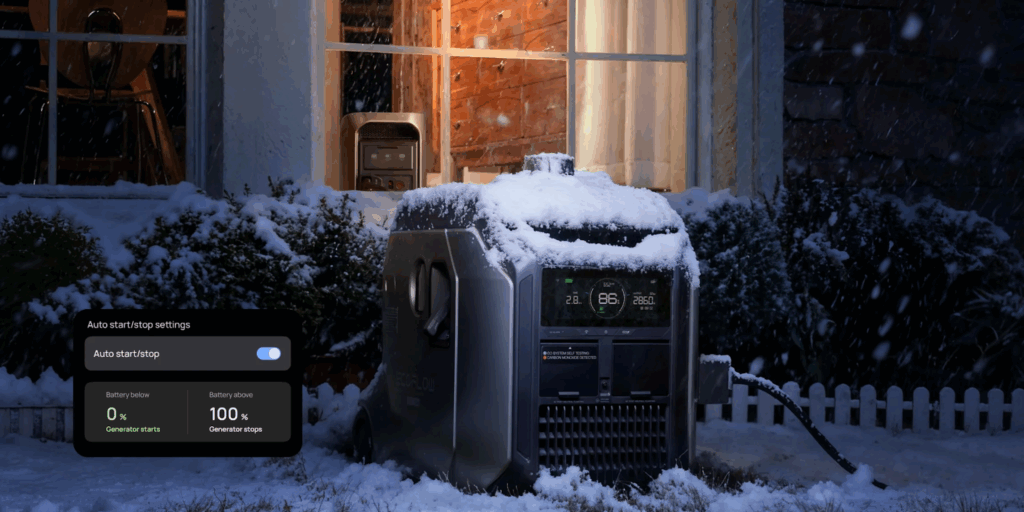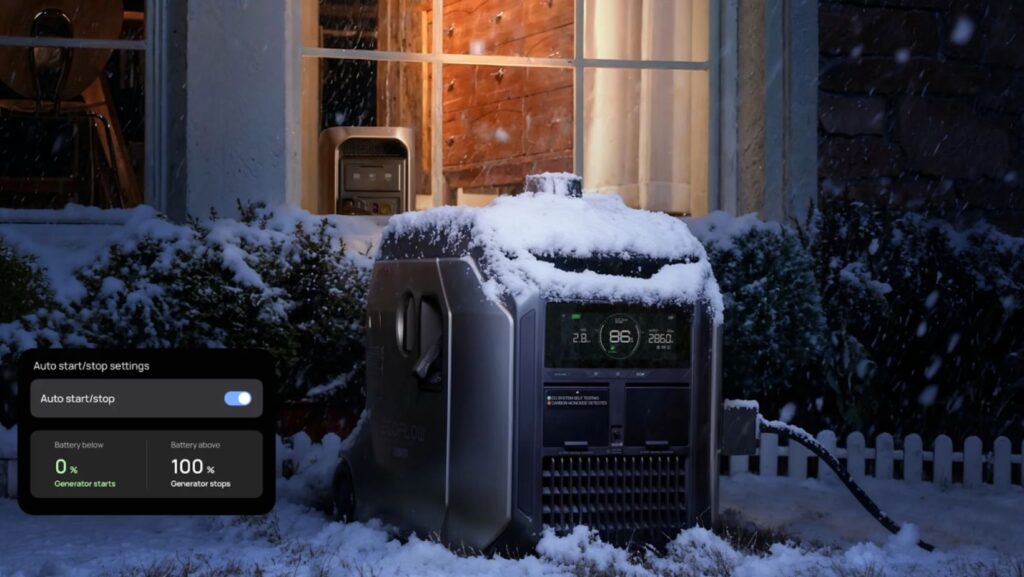Electricity is one of the most important things in today’s life. Today, access to energy for working, traveling, camping, or during sudden power outages is no longer a luxury; it is fast becoming a necessity. This need has led to the creation of a great solution – portable power stations. People can take electricity anywhere with compact battery systems that have high energy density, eliminating reliance on fuel generators, noisy engines, or fixing the power grid.
Portable power stations are giant batteries with an inverter and outputs that allow you to run appliances and charge electronics, and run tools. The battery itself never goes dry as long as you have power to charge it up. By virtue of its design, the user simply unplugs it and uses it anywhere they need to. The portable power station does not rely on gas and emits fumes like traditional gas generators. They store power in advance for future use. As a result, they deliver clean power and silent operation without any emissions.
What Exactly Is a Portable Power Station?
Portable power stations have a rechargeable energy storage system that converts DC battery power into AC or DC power that you can use. It is basically a bigger power bank and has a much higher capacity. It can run devices like your laptops, TV, fridge, medical equipment, and even power tools.
A standard unit contains:
- A high-power storage battery: Lithium or LFP.
- An inverter for AC output.
- USB, DC, and standard wall-style power outlets.
- A built-in battery management system for safety.
You can charge it in multiple ways (wall socket, solar, car charging, etc).
Due to its versatility, it can be used in various ways, like a backup power supply in homes, for outdoor use, and for other emergency uses.
Why Portable Power Stations Are Becoming So Popular.
- Home Backup During Power Outages.
Many areas of the world have begun to face blackouts due to various things, including extreme weather. A portable power station gives you backup power without needing to store fuel, noisy generators, or extra ventilation space. You can use it to power up lights, mobile phones, Wi-Fi routers, and even fridges.
- Outdoor and Off-Grid Use.
Power supply units are specifically designed to enable campers, van lifers, boaters, RV’ers, or remote workers to stay connected while on the go. A fully charged unit can run a small fridge for hours, as well as camera gear, drones, speakers, lights, and laptops, and will do so for days without using the car battery or the campsite socket.
- Cleaner and Safer Than Fuel Generators.
Classic generator makes noise, emit fumes, and work on gasoline or diesel, and can’t be used indoors. You can use portable power stations inside your house, car, and even a tent, as they are silent, emission-free, and completely safe. They require little maintenance and only require a wall plug or solar panels to recharge.
- Solar Compatibility and Renewable Energy Use.
More models are allowing you to connect solar panels for a solar generator setup. Powers got independence for off-grid people, travelers who spend more days outside or at home, who need backup independent power. Solar charging is a free, renewable energy source anywhere the sun shines.
Key Features to Look For When Choosing a Power Station.
Since power needs vary person to person, the below are the key things to consider before buying one.
- Battery Capacity (Wh or kWh).
The watt-hour label of a device indicates how long it can run. Battery-powered equipment ranging from 200 to 500 Wh is fitted for phones, cameras, and laptops. Refrigerators, TVs, power tools, or medical devices can run from larger models, which are 2000 Wh or more.
- Output Power (Wattage).
This tells how many devices the station can power at once. For example:
- 300W output: laptops, lights, fans.
- 1000 to 1500 watts power rating for coffee makers, small appliances.
- 3000 to 5000-watt beyond for home backup power.
Many appliances also have surge power, meaning that they require extra power to start. Both Continuous and Surge – a good power station will list both.
- Battery Type: Lithium-Ion or LFP (LiFePO4)
More is invested in LFP (Lithium Iron Phosphate) batteries because they last longer, run cooler, and handle more charge cycles. If you are careful, they may live to 10 years old.
- Charging Speed and Options.
Fast charging is important if you need frequent recharging. The best models can charge:
- From the wall outlet in under 2 hours.
- From solar panels during the day.
- From a car while driving.
- Weight, Design, and Size of Portable Design
Smaller units may weigh 5-10kg and can be carried by hand. Whole-home power stations may weigh 30-50 kg or higher and often have wheels.
- Expandability.
Some units let you connect more batteries if you need more power storage over time. This is helpful for homes off the grid, RVs, and setups for emergency long-term use.

Limitations to Keep in Mind.
Although portable power stations are useful, they are not flawless. Here are the common limitations:
- Not recommended for very high-energy appliances unless you buy the large, expensive model.
- While all batteries degrade over time, LFP models last for much longer.
- The initial costs can be steep in comparison to fuel generators, especially for larger power outputs.
- You must charge them—they don’t come with an endless power supply depends on solar.
The benefits that solar generators bring are worthwhile to most users compared to the downsides.
Final Thoughts.
Power stations are more than just a camping gadget; they are fast becoming household and outdoor essentials just as your smartphone and wifi router have become. Portable power stations can provide power for your home as an emergency backup, serve as silent energy while camping, and make solar power easy to use. They offer freedom, flexibility, and peace of mind.
Choosing the right size, specification, output, and one of a number of drive options is the secret to a successful battery for your energy requirements. Every year, technology gets better with time. Making them cheaper, more powerful, and more easily accessible. This makes a power station a smart device to buy.
